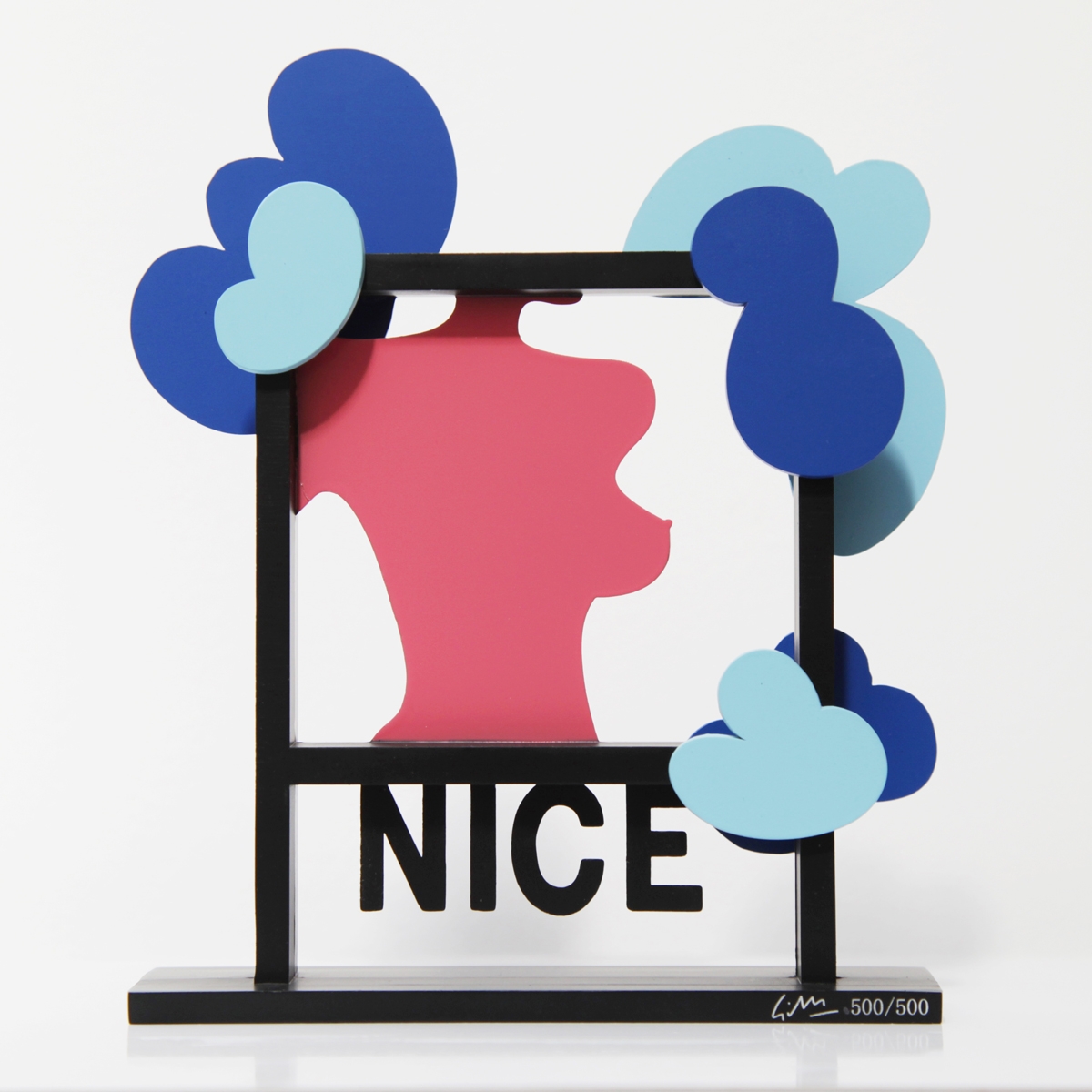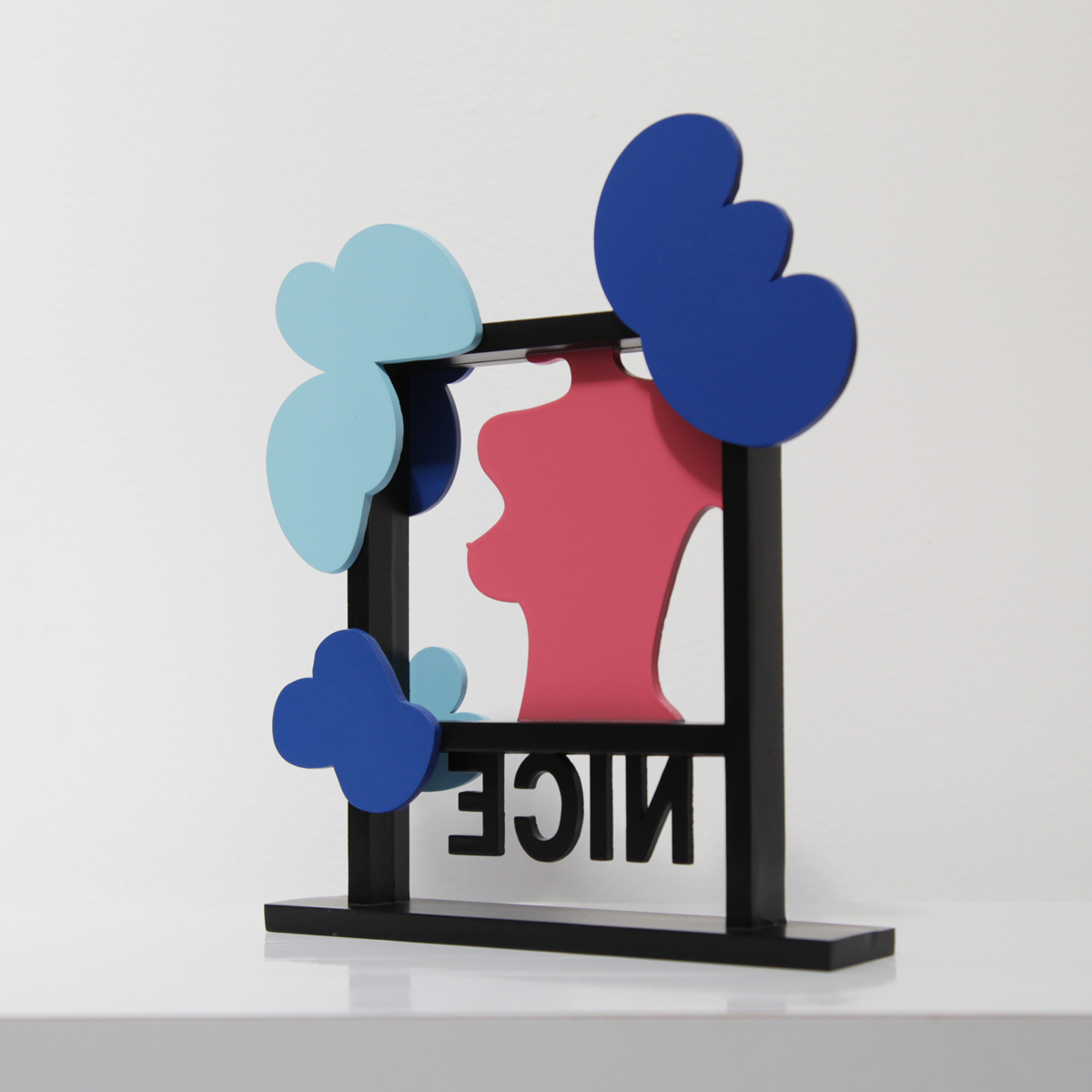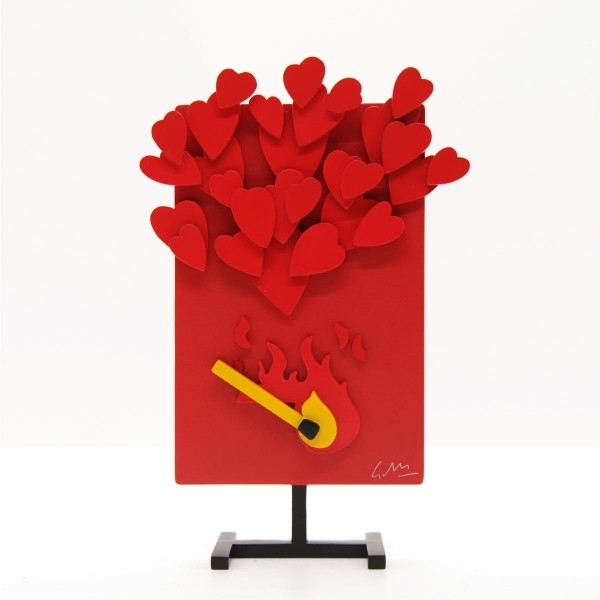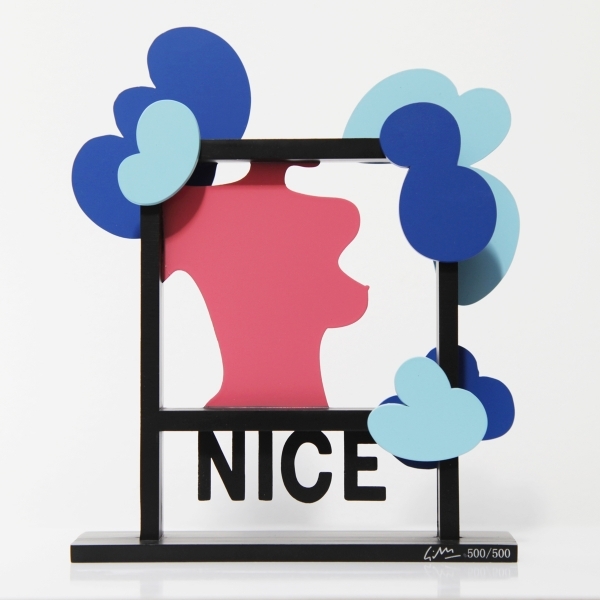Description
Artwork
« Claude Gilli : comes from the sun and the sea; perception : that of saw blade; components : color with color, even more color, cut, poured, spread out, with density, with his own hand. Personally I like it ». Arman, 1966.
In his work Claude Gilli reflects on sculpture as a constant dialogue between two and three dimensions. In the 1980’s, after meeting with Michel Roudillon, Claude Gilli starts working on steel sculptures. He pro- gressively abandons woodworking to follow the path of cutting and welding steel. Many new perspectives open up to him, one of them is the possibility to conquer the outdoors by making monumental sculp- tures. His cuttings, incredible three-dimensional land- scapes in layers and painted in blue, green, yellow and pink are an explosion of colours and materials recal- ling the pop tendency of the Nouveaux Réalistes (New Realists) and a composition in the same vein as Wesselmann. He may figure feminine nudes, bottles or layered Mediterranean landscapes, they all remind us of Nice, the blue sky of the Riviera, that will always be tied to Claude Gilli’s work.
—
Edition ART FOR ALL by Galerie Loft
Painted cast metal
H.16 x L. 13 x P. 3 cm – 550 gr.
Signed in the mold and numbered in 500 copies.
Dim. of the box (with protective case) : H. 22,5 x L. 16 x P. 5 cm

Video
Additional information
| Weight | 550 g |
|---|---|
| Dimensions | 16 × 13 × 3 cm |
| Year | 2019 |
| Material | Cast iron |
| Tirages | Edition of 500 |
| Signature | Signed in the mold |
| Dim. de la boite | H. 22,5 x L. 16 x P. 5 cm |







